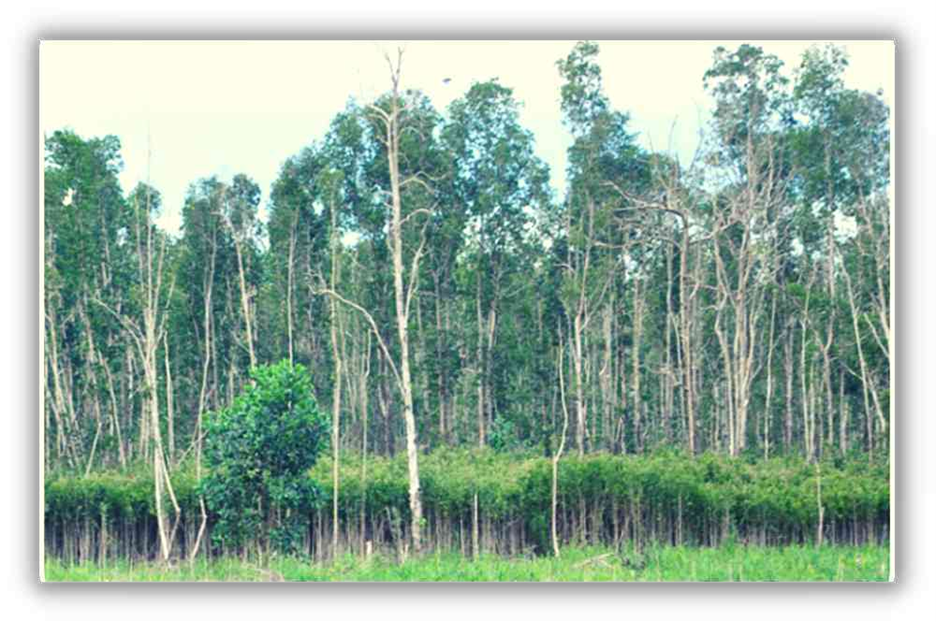Gelam forests
International sanctions imposed over Moscow’s invasion of Ukraine have curbed timber supplies from Russia and Belarus. According to industry figures, Russia and Belarus account for nearly 25 percent of the worldwide timber trade. The international timber trade contributes some $468 billion to the global economy every year. This current supply shortage includes both softwood and hardwood species, and while alternative or underrated sources are welcome, they are very limited.
One of these underrated species is Gelam (Melaleuca spp), a common forest tree species growing in moist, saline conditions and in acid-sulphate soils and peat soils in the coastal regions of Southern Kalimantan, Indonesia. Gelam not only has minimal silvicultural and forest management requirements, it also produces a number of highly desirable commercial products such as honey, essential oils, pepper and wood. The wood has excellent characteristics and is reported to be durable in contact with wet ground and sea water. Gelam also has several environmental benefits. It helps to rehabilitate degraded peatlands and if managed sustainably, it will also reduce peat fires resulting in less smoke and haze.
Around U Minh Thuong National Park in Vietnam, the planting of Gelam was found to deliver the solution to recover natural conditions, while protecting 3,900 hectares of a unique peat swamp forest ecosystem. The conservation of Gelam trees is a national priority because they buffer floods, recharge aquifers and provide habitat for endangered wetland species. About 25,000 people living in the park’s buffer zone benefit through the provision of clean water and a healthy amount of small fish.
In Central Kalimantan around Sebangau National Park, similar gains can be generated as Gelam has emerged spontaneously in degraded peat swamps.
Gelam timber businesses are managed either by smallholders or small-scale sawmills producing stakes, poles and sawn-timber. By investing in smallholder-based Gelam supply chains, substantial business opportunities could be achieved which would also contribute to the economic development of the entire region. Establishing sound ownership of the resource through community institutions like handils could ensure sustainable resource management, as well as a sustainable supply chain for independent producers.
Usually, handil members have a strong sense of belonging to the area which encourages communities to implement sustainable peatland management activities. The handils already take good care of the handil area, including its waterways. In order to adapt and expanded upon this, handil management can set up new regulations for its members, monitor implementation and mobilize members for communal activities to improve water and peatland management. Furthermore, Handil management has experience working with government institutions to facilitate cooperation between the handils and other government organizations to manage the peatland. As Gelam is growing around handils, certification and management will be regulated through Indigenous handil-based governance.
It is important that the Gelam timber or Gelam timber products meet international requirements for sustainable and legal timber. Indonesia has its own mandatory Timber LegalityVerification System (SVLK) which includes sustainability requirements and legality compliance in both domestic and export value chains. Additional voluntary certification may also be pursued.
By empowering community-based institutions that have a long track record of sustainable management of Gelam resources, we are one step closer to filling the gap in timber supply created by the war.
Authors
Johan Kieft & Jeroen Knol
